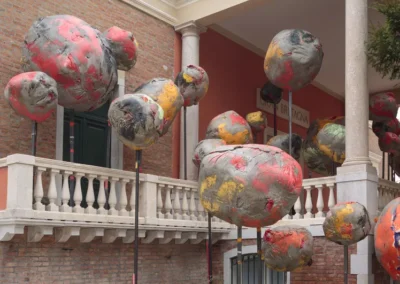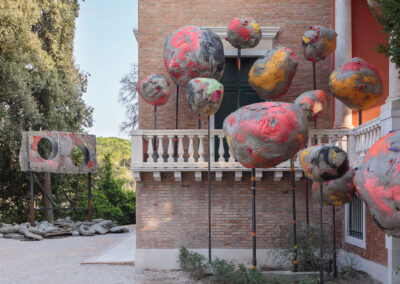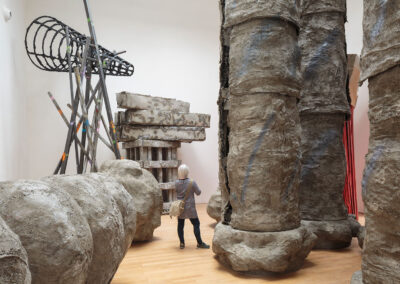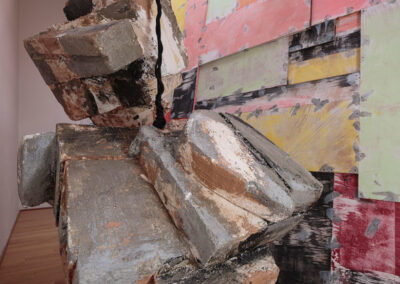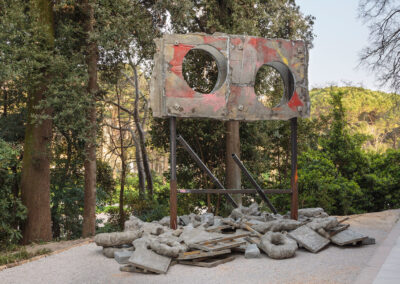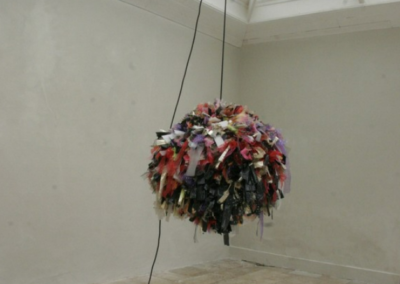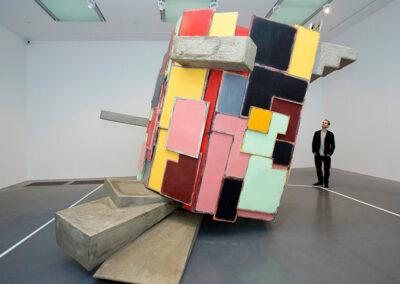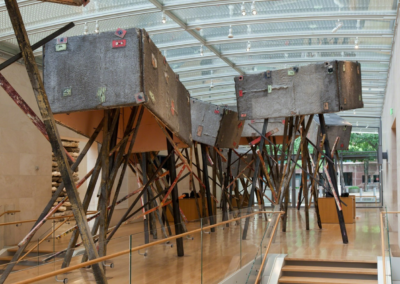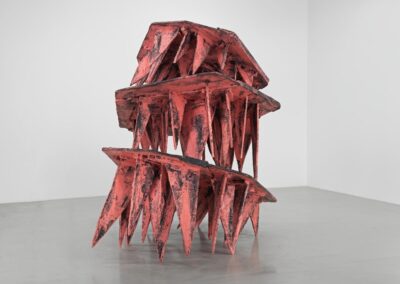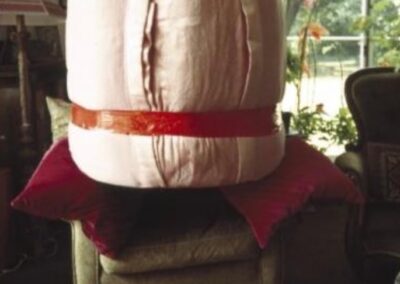Our next Artist You Need To Know is Dame Phyllida Barlow (1944 – 2023).
Barlow (a member of the Order of the British Empire and the Royal Academy of Arts ) was a British visual artist best known for her monumental sculptures and installations. A graduate of the Chelsea College of Art (1960 – 1963, where she was influenced by Anthony Hatwell and George Fullard ) and the Slade School of Art (1963–1966), Barlow began teaching at the latter in the 1960s and would be a mainstay of that institution for over four decades. Retiring from teaching in 2009 (but holding the position of emerita professor of fine art), she focused on her art practice and experienced several significant career highlights during these years : in 2017 she represented Britain at the Venice Biennale (the gallery below is of that work). Influential as a teacher as well as for her work within the framework of Brutalism, several of her significant students include Rachel Whiteread and Ángela de la Cruz.
“The starting point is very raw. It’s often just the urge to begin a work, and to use my experience in a very direct way: pouring, spilling, piling up, all those kinds of ways of filling that empty space in front of me.”
Many of her works are monumental, dwarfing the visitor, and offer a physical intersection of the ideas of sculpture, architecture and installation : many of her gallery exhibits function more as environments created by her works than singular art objects. “Phyllida Barlow’s sculptures and installations embrace both material whimsy and imposing scale…[she] combines media such as cardboard, fabric, plywood, polystyrene, clay, plastic pipes, and cement into her brightly hued assemblages, which often appear to be bursting at the seams.” (from Artsy)
Born in Newcastle upon Tyne, England, in 1944, Barlow was Inspired from a young age by the urban environment and by an exhibition at Whitechapel Gallery in London in the early 1960s titled New Generation Sculpture. This spurred Barlow to begin “experimenting early in her career with the sculptural potential of materials unassociated with traditional sculpture, like fiberglass, resin, fabric, and paint. Prior to receiving exhibitions in major museums and galleries, Barlow utilized public and temporary spaces to show her work, developing her exploration of physical space and challenging conventional notions of where sculpture could exist.”
She’s described her practice as “more functional than artistic” as her artwork is “created through layered processes of accumulation, removal, and juxtaposition…The resulting massive works challenge viewers’ experiences of physical space, stretching the limits of mass, volume, and height as they tower, block, and interrupt space. Yet these works remain distinctly anti-monumental; the artist leaves exposed, unfinished seams, revealing the means of the works’ making and playing with the tensions between hardness and softness, the imperious and the comic, and the painterly and the sculptural.” (from here)
During her lifetime, Barlow earned the Aachen Art Prize (2012) and was recognized as a Royal Academician in 2011. Significant exhibitions were mounted at the Royal Academy of the Arts (London, England, 2019); Jupiter Artland (Edinburgh, Scotland, 2018); Turner Contemporary (Margate, England, 2017); Venice Biennale, Italy (2013 and 2017); Nasher Sculpture Center (Dallas, Texas, 2015); Tate Britain (London, England, 2014); and New Museum (New York, 2012). This is just a sampling of her exhibition record.
Barlow lived and worked in London, where she passed away in March 2023. A fine obituary of the artist and teacher can be seen here. Several videos about Barlow can be enjoyed here and here.
“In art, as in life, things can go wrong, things break, mistakes get made. That’s part of the adventure.”



